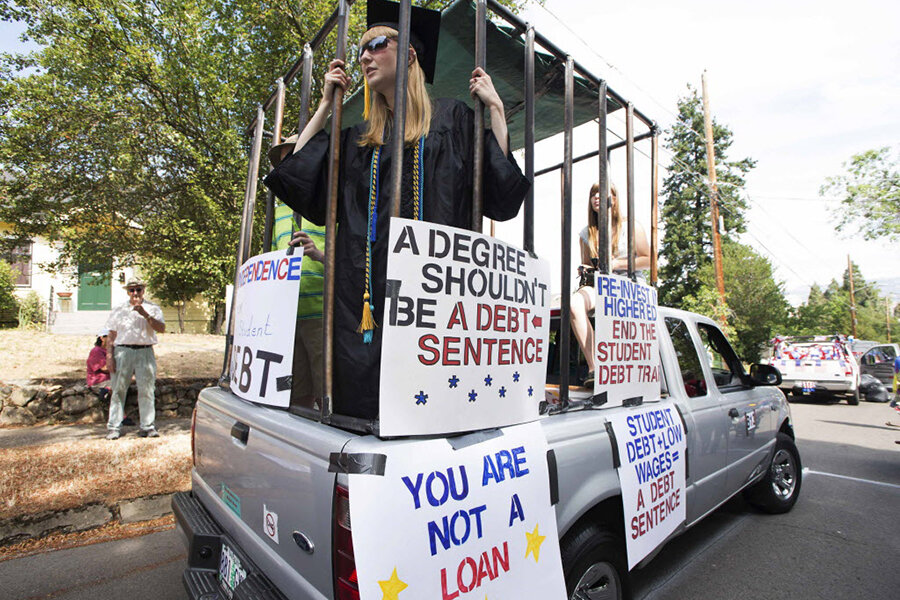Think twice before borrowing for your kid’s college
Loading...
Sixty-year-old Pamela Last doesn’t have a college degree — but she has roughly $200,000 in student debt. Like a growing number of parents, Last took out federal parent PLUS loans to help her now-26-year-old daughter, Reannan, pay for school at the University of California, Santa Barbara.
Last’s debt started at around $30,000, but it ballooned after she deferred payments for months while interest accrued. It “looms over” her head, she says. And when she asks the company that services her debt for advice, she says she gets different answers from different people.
She’s not the only one who’s frustrated. About 64% of student loan complaints to the Consumer Financial Protection Bureau from borrowers age 62 and older involve dealing with a lender or servicer, according to a bureau report out this week. Almost three million Americans age 60 or older have student loans; 73% of them borrowed to pay for their kids’ or grandkids’ college education, the report says.
Last says she doesn’t regret the decision. But if owing tens or hundreds of thousands in student loans isn’t what you envision for your golden years, don’t take a federal parent PLUS loan or another type of parent loan lightly.
Student debt gets harder to handle with age
You can’t transfer PLUS loans to your child, which means you’ll be stuck with the debt until you pay it off. Your child can refinance the loan into his or her name through a private lender, but that’s only an option for borrowers with strong credit. It also means the loan would no longer be eligible for federal forgiveness programs and repayment plans.
Student loan borrowers are increasingly likely to default as they age, according to the report. In 2015, 37% of federal student loan borrowers age 65 and older were in default, compared with 29% of borrowers ages 50 to 64 and 17% of borrowers under age 50.
Defaulting on a federal student loan triggers a laundry list of consequences: Your debt will be sent to collectors. Your credit score will suffer. The government can garnish your paycheck or withhold your tax refund to recover your balance. And perhaps most damaging for older adults, the government can take money from your Social Security check.
And then there are the indirect effects of default: With debt to pay, you might skimp on health care costs and retirement savings.
Support your child without going into debt
Minimizing the educational debt you take on for your child — or steering clear of it completely — doesn’t make you a bad parent. Explain your reasoning, and help your child make the best choices to pay for college. Options include:
- Taking out a federal direct unsubsidized loan. Your child will need to apply with the Free Application for Federal Student Aid. Depending on your family’s financial situation, he or she might qualify for federal direct subsidized loans, too, and possibly grants, scholarships and work-study programs.
- Going to a more affordable school. Your child can research schools and compare costs with the Department of Education’s College Scorecard.
- Borrowing from a private bank. This choice is risky, though. Help your child learn about both federal and private students loans before making a decision.
If your child takes on debt, help him or her learn about how to pay it off. Making payments on a federal income-driven repayment plan or refinancing through a private company are both possibilities.
Teddy Nykiel is a staff writer at NerdWallet, a personal finance website. Email: teddy@nerdwallet.com. Twitter: @teddynykiel.
This story originally appeared on NerdWallet.





